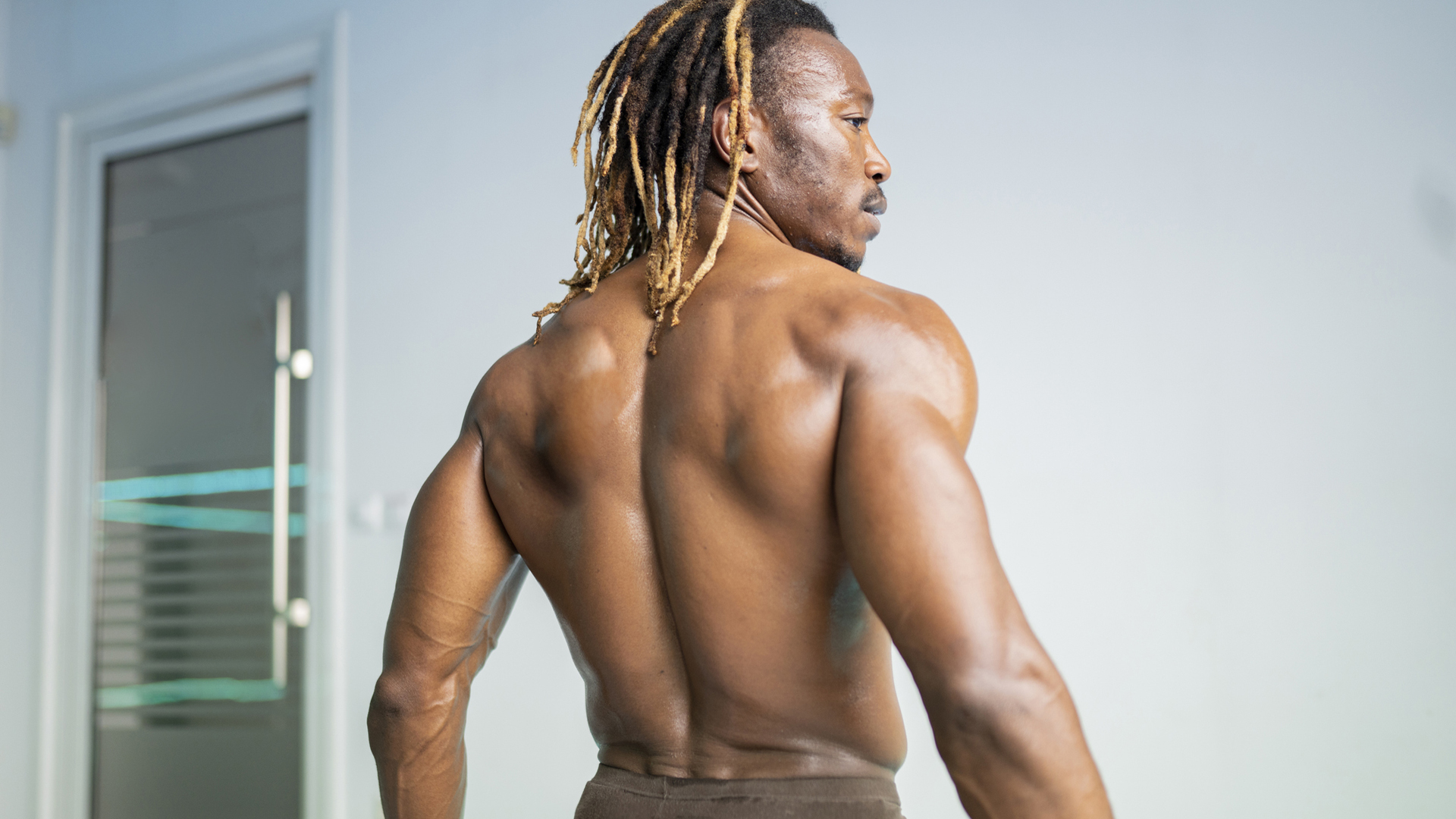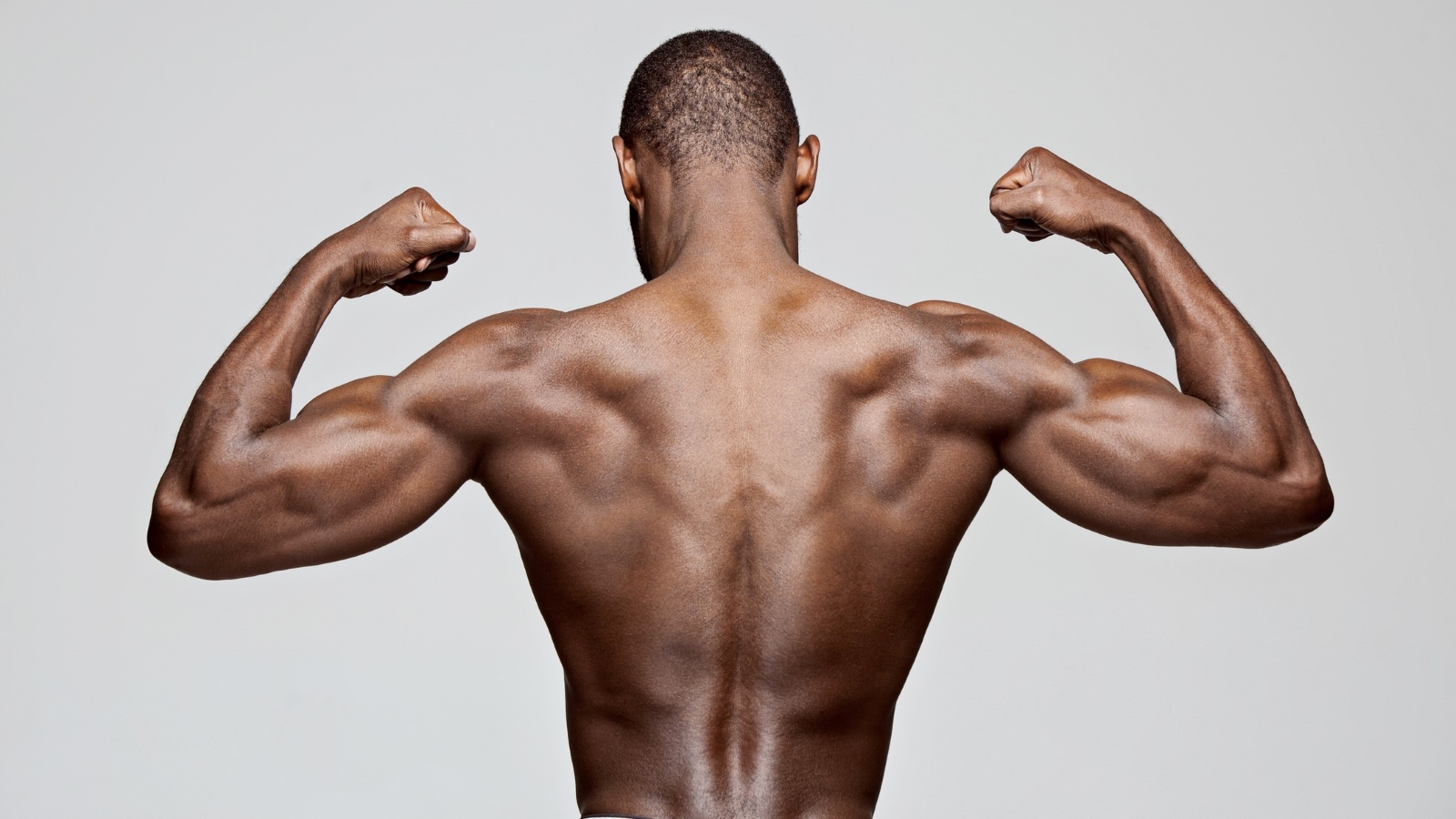3 best exercises to build trap muscles like a pro using basic home gym equipment
Don’t trap yourself in mediocrity: training your trap muscles can help you work out harder and build muscle easier


Developing a set of truly impressive traps is one of the best ways to radically alter your physique in a short space of time. “Nothing works unless you do”, as Arnold Schwarzenegger once famously said, and this gym adage also rings true for training trap muscles. We'll show you how to best build enormous traps using only three exercises.
Traps are the winter abs; a set of thick, dense traps are one of the few muscles that are actually visible beneath layers of clothing. These muscles are an integral part of the top shelf, a part of the body including your delts, traps and upper back that radically alters your physique for the better.
When optimised, these muscles work in tandem to give you that power look. You know the one: broad shoulders, a thick upper back and chest and a neck that could comfortably take a blow from Mike Tyson (maybe not Iron Mike, he had a seriously thick neck). It’s the look of a powerful athlete.
If you’ve never squatted heavy then you honestly can’t appreciate the value of a set of meaty traps. When you squat you pinch your scapula together to lift and contract your traps. This forms a shelf on your upper back for the bar to sit on. More mass means you have a bigger shelf, and a bigger shelf means more weight in the squat. Squatting more weight equals a bigger, leaner and stronger physique.
What are trap muscles for?
The trapezius muscle begins at the base of your neck, fans out across the rear of your shoulders and tapers down to the middle of your back. It aids in tilting and turning your head, stabilising your shoulder and controlling your scapula when you move your arm. It also contributes to spinal support when twisting and bending.
You can separate the traps into 3 distinct parts, as per below.
The upper traps extend from the base of your neck to the tops of your shoulders and are primarily targeted through “shrugging” movements (think regular old barbell shrugs).
Get all the latest news, reviews, deals and buying guides on gorgeous tech, home and active products from the T3 experts
The middle traps span your entire shoulder girdle and are primarily targeted through any high rowing movement which pinches your scapula (think face pulls).
The lower traps portion of the muscle tapers down to the middle of your back and is usually targeted through rowing exercises (think seated cable rows).
3 best trap exercises
1. Deadlift
In-depth: how to master deadlifts
Compound exercises such as deadlifts are the first key to unlock the door to mammoth traps. The traps work in an isometric fashion when deadlift heavy in an attempt to stabilise your spine, maintain scapular integrity and keep the bar close to the body (though to a lesser degree than the lats). There’s simply no better method for placing them under this kind of isometric strain.
- Assume a stance slightly wider than shoulder width, with the bar directly over the middle of your foot.
- Take a deep belly breath and hold it to create that intra-abdominal pressure.
- Take a double overhand grip on the bar at just beyond shoulder width.
- Forcefully flex your lats to help lock your spine in place and pull the bar in towards your shins.
- Maintain a neutral spine and look straight ahead as you flex your hamstrings and glutes to begin lifting the bar.
- Ensure you’re at fully hip extension and avoid hyperextension at the top of the movement by forcefully contracting your glutes.
Beginners should use progressive overload on deadlifts and aim for a top set of five solid reps, aiming to increase the weight of each workout.
2. Pause shrugs
If you do a set of shrugs and your traps aren’t screaming the following morning then you’ve honestly not done them right. The key with shrugs is to hold the contraction (top of the movement) for 3 full seconds. This increases time under tension and drives massive amounts of blood into the area.
- Begin in a standing position with either a double overhand grip on a barbell or a dumbbell in each hand.
- Initiate the movement by literally “shrugging” your shoulders whilst maintaining a straight arm.
- Don’t shrug directly up. Rather, focus on shrugging up and back and pinching your scapula together. It should be a diagonal backward motion when seen from the side.
- Squeeze the peak contraction hard for 3 seconds.
- Maintain a neutral head position throughout.
- Don’t just drop the weight. Control the eccentric!
You’re looking for 3 sets of anywhere between 8 and 15 reps on pause shrugs.
3. Kroc row
This is my personal silver bullet when it comes to getting “yoked”. Before I hear the “form police” crying that this is a butchered dumbbell row I’d like them all to know that the man in the video is Jim Wendler. Infamous creator of the 5/3/1 strength program and one of only a handful of men to ever squat over 1000 pounds in competition.
If you’ve never done these before then prepare to be humbled.
- Take a full grip on a dumbbell.
- Place your other hand on a waist high object. Your upper body should be around a 30 to 40 degree angle from the ground.
- Begin at the bottom of the motion and focus on getting a good stretch across your upper back.
- Begin pulling back from your shoulder (not your elbow) and retracting your scapula in a single motion.
- Pinch your scapula at the top before lowering the weight and repeating.
It’s worth noting that the angle listed is the one that works best for me but everyone is different. This exercise requires a period of test and adjustment.
Remember that the Kroc row may have a looser form than its malnourished cousin the dumbbell row, but that doesn’t mean you can just swing the weight around with no care for proper form. The injury potential is high on these if you don’t pay attention.
After a couple of warm-up sets, you should be aiming for a single all-out effort of 25 to 40 reps per arm with a weight you would normally lift for 6 to 10 solid reps. Don’t worry if you don’t hit the requisite number in the first attempt, as long as the reps keep climbing then your back’s growing.

Why won’t my traps grow?
Maybe nothing we’ve covered is news to you. Perhaps you’ve always known that traps are great and have long desired a meaty set of your own.
So why does it still look like your upper body is 50% neck?
The problem is that people tend to fall into two camps when it comes to traps. Those for whom lifting heavy is the only method they pursue, and those for whom any exercise targeting them not using the multi-gym is a waste of time.
Both of those people are wrong and we’ll go on to explain why.
How to build monstrous traps?
Building great traps requires you to hit them from multiple angles all whilst exploiting the full extent of the intensity curve. This means you’re going to lift some truly shocking poundage before moving on to obliterating the muscle with greater volume.
For the highest intensity exercises, there’s no getting around the fact that you’re going to need to invest in a quality barbell. Mirafit’s M3 Olympic barbell is rated to 680kg, has a great pedigree and is just generally beautifully crafted. This is the kind of bar you’re looking for when you wrap your hands around a heavy deadlift. Just remember to wear a quality weightlifting belt when things get really heavy and your form starts breaking down. You only get one spine in this life.
Planning on going big for your barbell and skimping on your plates? Pretty much everyone I know does this their first time buying serious lifting equipment and it’s a big mistake. Bumper plates are all the rage right now but they’re less than optimal for deadlifting as there simply isn’t enough real estate on the bar to load significant poundage. Bumper plates on a deadlift are like monster truck tires on a Ferrari, the wrong tool for the job. Check your ego at the door and opt for Mirafit’s extra thin steel plates instead.
We’re not just loading barbells to the max in this workout. Dumbbells are going to be a key weapon in your arsenal. Using adjustable dumbbells might even be a better option for home workouts; for this particular workout, I recommend the MuscleSquad 32.5kg Adjustable Dumbbell or HyGYM 40KG Loadable Adjustable Dumbbells Set as both of these are heavy enough for Kroc rows.
Building enormous traps requires you to grip and hold extreme weight for a lengthy time. Barring injury, everyone’s grip fails long before their traps so you’re going to want to invest in a set of weightlifting straps as well. Just remember to leave them off for your warm-up sets or be doomed to enjoy massive traps alongside toothpick forearms.

Tom’s been mad about health and fitness for longer than he can remember. His training journey has taken him from long-distance running and powerlifting to CrossFit and gymnastics. His proudest fitness achievement is running (and finishing) a marathon with no specific preparation. Tom also boxed recreationally for over 3 years at London’s oldest boxing gym and continued during his time in the army. He loves writing about everything training and nutrition-related.